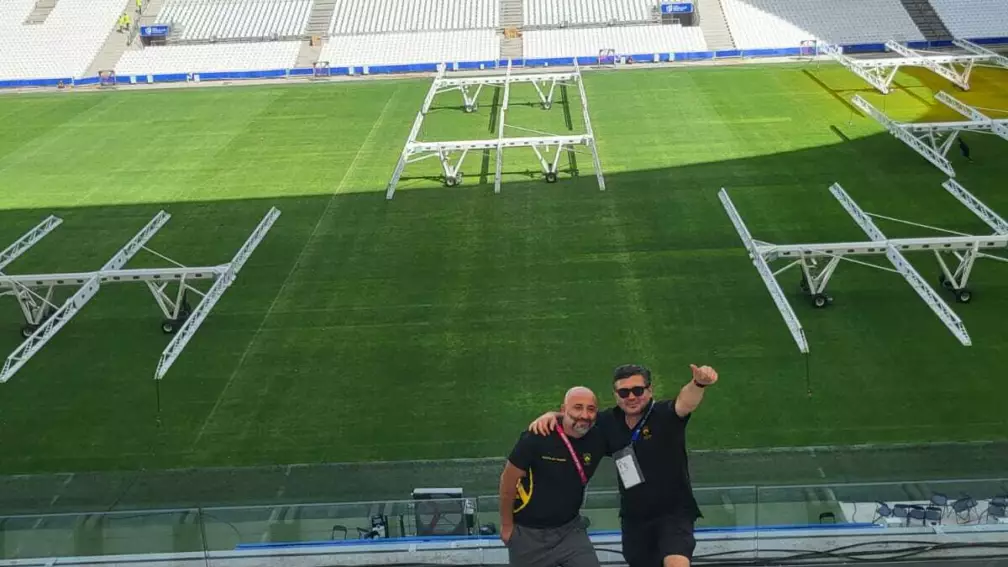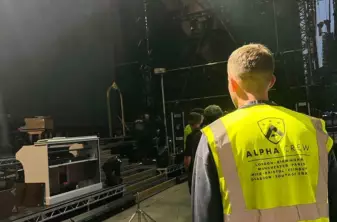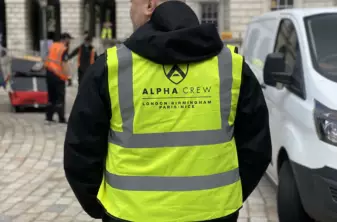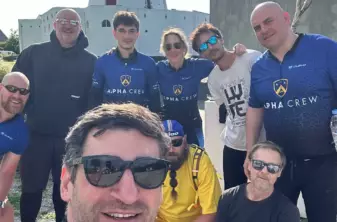What it Takes to Crew a Stadium Event: Planning, Staffing, and Execution

Stadium events are massive operations with countless moving parts behind the scenes. The scale of these productions demands a large, skilled crew working seamlessly across setup, security, technical support, and logistics. A well-planned and well-executed crew operation is essential to delivering a smooth, safe, and successful event. In this blog, we take you behind the scenes to explore what it really takes to crew a stadium event - from early planning to final breakdown.
Planning Crew Operations
Understanding the brief
For maximum efficiency, your crew provider should be involved in the planning process as early as possible. Their input during site visits and production meetings allows them to fully understand the scope, anticipate logistical challenges, and flag potential issues before they arise. Early involvement also means they can draw on experience from similar events, offering practical insights and suggesting solutions that improve safety, efficiency, and overall execution.
Crew volume
Determining crew numbers starts with understanding the type of event, expected attendance, and the layout and demands of the venue. Different events have different requirements - for instance, a live concert may need more hands-on support than a sporting fixture due to complex staging, lighting, and artist logistics. The more detailed the event brief, the more accurately your provider can allocate the right number of crew for each phase of the build, show, and breakdown.
Specialist requirements
Beyond general crew, many stadium events require a range of specialised roles. These might include technical crew, plant and machinery operators, riggers, AV technicians, or crew trained in working at height. Factoring in these needs early in the planning process ensures you’re fully covered and helps avoid last-minute scrambles to find qualified personnel. The right specialists in the right roles can significantly improve efficiency and safety on site.
Walkthroughs & safety
Site walkthroughs with the production team are vital for spotting potential challenges before the crew steps on site. Whether it’s identifying tricky access routes, tight build schedules, or shared working spaces, early collaboration helps teams plan smarter. It’s also essential that all crew are fully briefed on health and safety protocols and familiar with site-specific risks. A well-prepared crew is not only safer but more confident and productive during high-pressure build and show days.
Logistics
Staggered call times
Crew need to be mentally and physically prepared for the demands of a stadium event - and that starts with smart shift planning. Staggered call times help prevent fatigue, especially during long build and breakdown periods. Ensure breaks are scheduled into shifts so the team stays focused, safe, and productive throughout the day.
Transport and access
Just like guests, your crew and production teams need to get in and out of the venue efficiently. Consider how road closures, delivery schedules, and limited access points could impact crew logistics. Coordinating transport plans in advance helps avoid delays and ensures that critical teams arrive where they need to be, when they need to be there.
On-site facilities
To keep things running smoothly, ensure there are proper facilities in place for your crew. This includes catering, clearly marked rest areas, and designated comms points for radios or briefings. Crew shouldn’t be navigating guest zones unnecessarily - well-organised support areas help avoid disruption to the event and maintain a professional working environment.
Security and crowd safety
Security teams play a vital role in more than just front-of-house crowd control. Depending on the event, you may also need backstage security, perimeter guards, and support for restricted areas. Factoring in these roles early on ensures both guest safety and the smooth operation of your production zones.
Key Challenges and Solutions
At large venues like stadiums, communication becomes significantly more complex. For example, at a site like The O2, it can take over 10 minutes to walk from one side of the venue to the other - so radios and clear communication protocols are essential to keep things running smoothly. Depending on the scale, the site may also be split into zones, with designated managers and crew chiefs overseeing operations to maintain flow and respond quickly to issues.
Stadiums are also busy public spaces, which means crowd control measures must be factored into the production schedule. Load-ins and load-outs should be planned around peak public entry and exit times to avoid unnecessary disruption or safety concerns. Access point management is another key consideration - you may need separate entrances for talent, press, crew, and audience members to streamline movement and avoid bottlenecks.
Weather is another major factor. Many stadiums are open-air or have limited cover, so you need to prepare for rain, wind, or extreme temperatures. From delays to unexpected site issues, large-scale events can throw curveballs - but with an experienced and well-coordinated crew, these challenges can be handled calmly and efficiently.
Coordination with Authorities
For large-scale events, collaboration with local emergency services is a critical part of planning. Coordinating with police, ambulance, and fire services ensures that everyone is prepared to respond quickly in the event of an emergency. Scheduling joint briefings ahead of the event helps establish clear communication channels and roles.
Working closely with the stadium’s in-house staff is also invaluable. These teams know the venue inside and out and can offer practical advice on everything from access points to crowd flow. Their insight can help you avoid common pitfalls and optimise your event plan.
When bringing in licensed professionals - such as specialised crew, plant operators, or security officers - it’s important to ensure all certifications and licenses are checked and up to date. This not only helps maintain a safe and compliant site but also ensures you're working with people who are qualified to do the job to a high standard.
Day of Event Execution
Crew typically arrive early for check-in, with ID checks and distribution of safety gear. Once on site, crew chiefs stage teams and deploy them to their zones - whether that’s building stages, running cables, or setting up barriers. During the event, technical crews manage AV and live feeds, staying on standby for any issues. After the show, the breakdown is fast-paced, with teams working safely and efficiently to clear the site, often overnight.
What Makes it all Work
For large stadium events, an experienced crew and excellent communication are essential. Production teams value proactive, flexible crews who can adapt under pressure.
Crewing stadium events isn’t just about numbers; it’s about planning, problem-solving, professionalism, and being proactive.
To work with our experienced crew, get in touch with the team!


